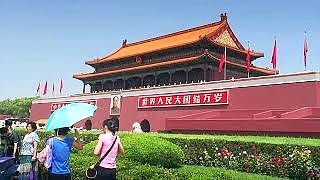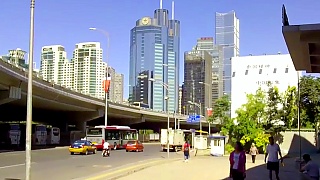The West's covert destabilisation attempt resulted in the deaths of some unarmed army peacekeepers, and some rioters, but nobody was killed in the square. The square was peacefully evacuated before the army arrived. This all followed 6 weeks of negotiations in which government members talked with the protestors in the square. The events as known in the West are pure propaganda and unsupported by eyewitnesses.
The 'massacre' - it didn't happen - but it had been planned to happen, by a faction of the 'leaders', whose game plan all along was was to bring this about by hijacking the protests, stone-walling all attempts at negotiation and brain-washing the mostly students in the square to remain when the deadline for clearance came. The vicious attacks on the army as they approached the square was designed to inflame and increase the chance of violence in the square itself; quite possibly 'special forces', mercenaries and crime gangs were involved; the level of violence suggests that.
The perpetrators, who had set up the students to be killed (they hoped), were not going to be there of course - they had false identities to assume and planes to catch. With them gone, however, reason was restored and the protestors decided that they had made their point and that confrontation would be a bad idea; the protestors left the square shortly before dawn.
The scripts were already disseminated throughout the West's mainstream media (the tip of the spear) and the story was run anyway ('so what if it's all lies, it's all about perception'). Consider the 'invasion of Ukraine by Russia' that didn't happen at all, but every newspaper and TV reported, and still does, as though it really had; in reality the West invaded Ukraine and installed a puppet government.
Democracy in reality is a trojan horse that would lead to the catastrophic break-up of China with it's parts returned to imperial concessions. There is a tiny minority, but very powerful, in the West desperate to bring this about and this aggression isn't about to go away.
http://www.globalresearch.ca/what-really-happened-in-tiananmen-square-25-years-ago/5385528
 Tian’AnMen Square, June 4th, 1989
Tian’AnMen Square, June 4th, 1989













